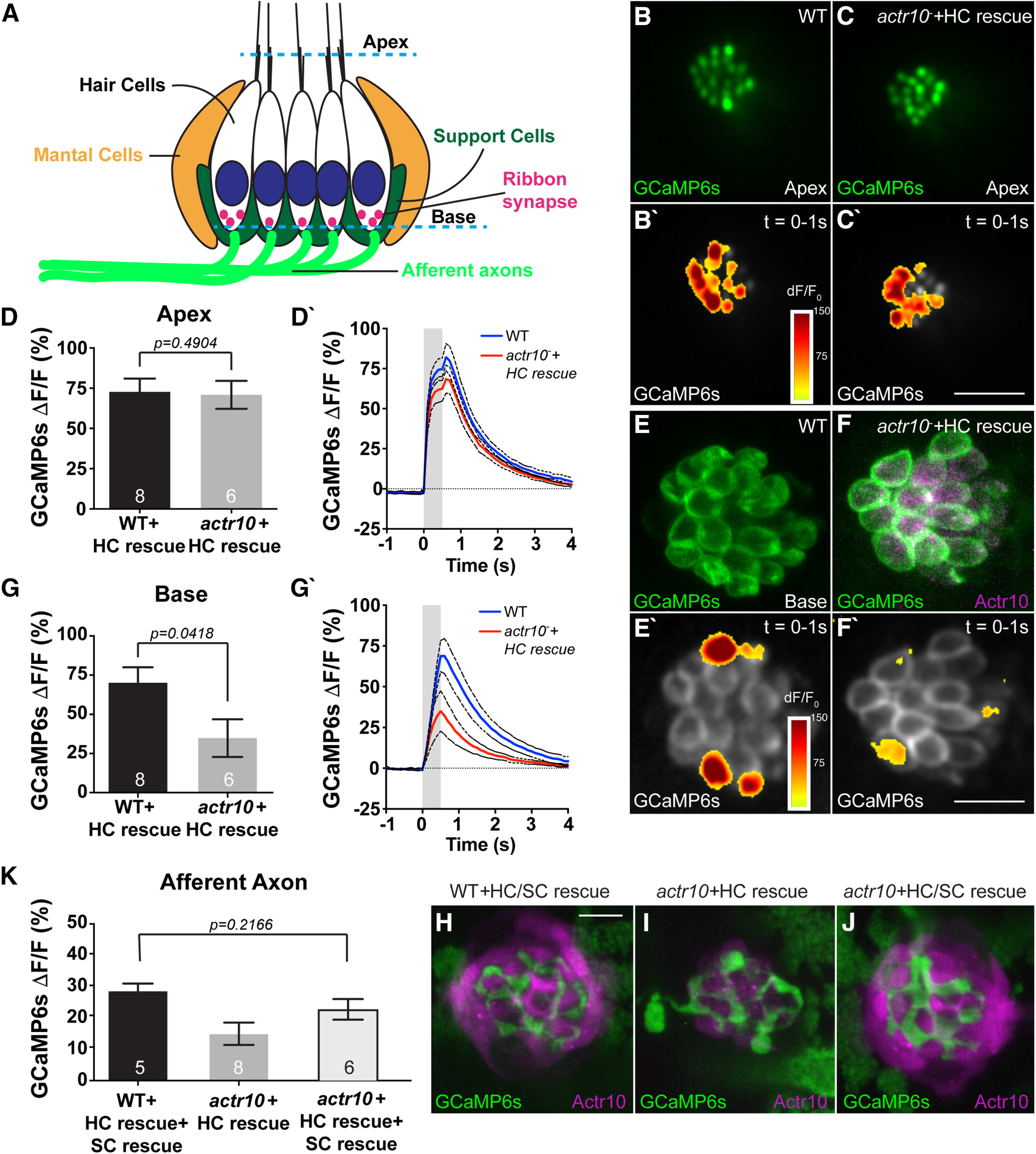Figure 5.

Loss of support cells (SCs) underlies the loss of postsynaptic activity in actr10nl15 mutants. A, Schematic of the neuromast indicating the “apex” of the HC where mechanotransduction takes place in stereocilia and the “base” of the HC where the presynaptic activity occurs. B, C, WT and actr10nl15 mutants with HC rescue at 5 dpf show similar mechanotransduction in HC stereocilia (Apex). B', C', Heat map of Apex GCaMP6s fluorescence intensity changes during stimulation. D, D', Quantification reveals no difference in the average change in Apex GCaMP6s fluorescence intensity between WT and actr10nl15 mutants with HC rescue (t test). WT+HC rescue: 72.73 ± 8.24; actr10nl15+HC rescue: 70.85 ± 8.71. Black dotted lines represent standard error of the mean. E, F, Compared with WT, actr10nl15 HC rescue mutants show reduced calcium influx at the presynapse. E', F', Heat map of GCaMP6s fluorescence intensity changes at the HC base during stimulation. G, G', Quantification of the change in Base GCaMP6s fluorescence is significantly different between WT and actr10nl15 mutants with HC rescue (t test). WT+HC rescue: 70.09 ± 9.93; actr10nl15+HC rescue: 34.81 ± 12.05. H–J, Rescue of Actr10 expression in actr10nl15 SCs in the Tg(She:actr10p2amRFP)y623/Tg(myo6b:mRFP-actr10)y610 double transgenic line. H, WT sibling with HC and SC expression of Actr10. I, actr10nl15 mutant with only HC rescue. J, actr10nl15 mutant with HC/SC double rescue. K, GCaMP6s responses in the axon terminal are normal in actr10nl15 mutant with SC and HC rescue but not with HC rescue alone (ANOVA). WT+HC/SC rescue: 28.05 ± 3.50; actr10nl15+HC rescue: 17.10 ± 3.08; actr10nl15+HC/SC rescue: 23.66 ± 3.26. Sample size indicated on graph. Scale bars: 10 µm. All data are mean ± SEM.
